The blog "Diversity in the Stacks" features some of Cornell University library’s collections and sub-collections that represent and reflect the University’s rich research interests and diverse population. Our research collections always attempt to bridge several missions: To collect and preserve the record of human knowledge; to serve the research, teaching, and learning mission of our faculty and students; to acquire a broad array of material ensuring greater representation of topics, cultures, peoples, and languages; to understand and empathize with viewpoints and experiences from people of all over the world.
![]()
Nubian Languages & Literatures
Middle East & Islamic Studies Collections
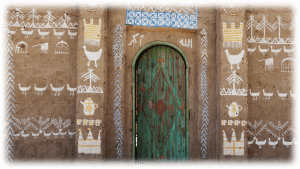 (The Nubia Museum, Aswan, Upper Egypt)
(The Nubia Museum, Aswan, Upper Egypt)
Historically, early works on Nubian Studies in the library trickled in with other collections dealing with Egypt or Sudan and were chiefly on history, philology, and linguistics. Book material in Nubian languages, which have become threatened vernaculars in the twentieth century, are particularly hard to locate and acquire. There certainly is a wealth of secondary source writing about the languages; but there’s limited availability of original primary and non-academic literature source material such as poetry, short stories, or novels, including in non-print format such as video and sound recordings.
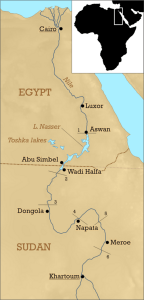
While assisting a College Scholar conducting research for an Honors Thesis on ‘Nubian: representations of a minority language, with a focus on questions of metalinguistics and community memories,’ it became obvious to the Curator that our collections holdings were quite limited on the subject.
Access to recent Nubian literature (in the original language and in English translation) is rare, as very few academic libraries in the United States seek to collect such material. This is largely due to the marginalized status of Nubian publishing in the Middle East, and by extension the peripheral position the language holds in the field of Middle East Studies. Moreover, Nubian books are not easy to find and acquire commercially outside of Egypt and Sudan. We have sought to expand the collection of this materials through our book suppliers and gifts
Thanks to our book vendors and suppliers in the Middle East we now have a good selection of works in Nubian, Arabic and in-translation, including novels, literary criticism, compiled collections, and reference handbooks. Books were added to the collection also by way of the Library of Congress’ PL-480 Program and its field office in Cairo, Egypt. We look forward to extending our purview to include journals and periodicals, online and digital resources, rare and manuscript materials.
We hope that these historical holdings and recent additions to the collection will support Nubian studies and be of interest to readers and researchers of various fields, as we seek to ensure greater representation for the peoples and languages of region, in a way that reflects the multiculturalism and diversity of the various areas and topics represented. A small selection of what the library owns is appended below.
Nubian Languages: Brief Introduction
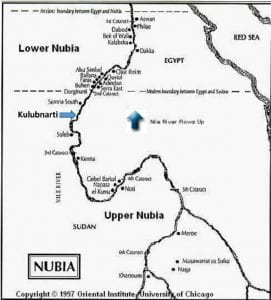 The Nubian languages are a group of related languages spoken in Nubia, an ancient region in northeastern Africa. In modern times, Nubia has been divided between Egypt and Sudan, two largely Arabic-speaking countries that have historically a mostly official monolingual education system and rarely tolerate cultural diversity and multilingualism.
The Nubian languages are a group of related languages spoken in Nubia, an ancient region in northeastern Africa. In modern times, Nubia has been divided between Egypt and Sudan, two largely Arabic-speaking countries that have historically a mostly official monolingual education system and rarely tolerate cultural diversity and multilingualism.
As a result of Arabization, Nubian languages are today mostly limited to the Nile Valley between southern Egypt (Aswan) and Sudan (Al Dabbah as well as villages in the Nuba mountains and Darfur). This context has led to cultural marginalization and a gradual cultural cleansing of the Nubian communities, as noted in a 2020 report on Nobiin by linguists Maya L Barzilai and Nubantood Khalil.[1] Other dynamics, such as labor migration and urbanization, and several waves of displacement during the 20th century, the largest of which was caused by the construction of the Aswan High Dam, have put the language at even higher risk. Despite obstacles like repression and lack of Nubian language education, writers have labored to establish a modern literary tradition that crosses borders.
[Learning the Nubian Language, Nubian Village in Aswan. video: 4:14 mins.] ——————————————- [1] Barzilai, Maya L. & Nubantood Khalil. 2020. Nobiin (Egypt, Sudan) – Language Snapshot. In Peter K. Austin (ed.) Language Documentation and Description 17, 118-125. London: EL
Publishing. Link to this article: http://www.elpublishing.org/PID/187 [This electronic version first published: July 2020.
**************************************************************************
Nubian Languages & Literatures : Sources from the Collection
The following is a sampling of material in the collections exploring Nubian culture, language, literature, and history :
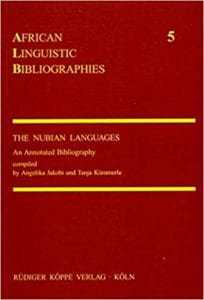
The Nubian languages : an annotated bibliography 1993 an annotated bibliography / compiled by Angelika Jakobi and Tanja Kümmerle ; with a foreword by Peter L. Shinnie.” Uris Library A.D. White Z7108.N82 J35x 1993 The bibliography presents an overview of the geographical distribution and the linguistic classification of Nubian languages and demonstrates how the study of Nubian languages has flourished, especially over the past decades. It is an excellent compilation and indispensable reference work for anyone working in the field. […] The bibliography covers the whole group of Nubian languages including the texts of the medieval period.
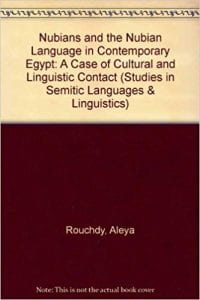
Nubians and the Nubian language in contemporary Egypt : a case of cultural and linguistic contact 1991. a case of cultural and linguistic contact / by Aleya Rouchdy. Olin Library PJ3002 .S93 v.15 . The displacement of the Egyptian Nubians from their ancient lands and their resettlement deeper in the land of Egypt in 1964 had an impact on Nubian culture and the Nubian language. Contemporary Egyptian Nubian consists of two dialects, Fadicca and Matoki. After the resettlement of Nubians, the interactions between speakers of the two Nubian dialects and speakers of Arabic increased. Nubian, an East Sudanic language, came into contact with a dominant Semitic language, Arabic. How has this increased contact affected the Nubian language in Egypt? The aim of this work is to examine from the perspective of a ‘language-contact situation’ the impact of the resettlement on the future of the Nubian language. The comparative data on the Nubian situation will add an important contribution to our fund of knowledge on processes of language contact. This is the first sociolinguistic study of the Nubian language from such a perspective.
Th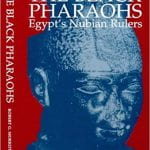 e black pharaohs : Egypt’s Nubian rulers. 2000 / Robert G. Morkot. Olin Library DT83 .M67x 2000. A comprehensive investigation of the Kushite kingdom, present day northern Sudan, which briefly controlled Egypt during the 8th century BC and influenced Egyptian affairs for hundreds of years. Morkot examines ancient and antiquarian perceptions of the exotic lands of Nubia and Ethiopia and attempts to tie the towns of Kush to archaeological remains. A large part of the book concentrates on the role of the Nubians during Egypt’s conflicts with Libya and the Assyrians.
e black pharaohs : Egypt’s Nubian rulers. 2000 / Robert G. Morkot. Olin Library DT83 .M67x 2000. A comprehensive investigation of the Kushite kingdom, present day northern Sudan, which briefly controlled Egypt during the 8th century BC and influenced Egyptian affairs for hundreds of years. Morkot examines ancient and antiquarian perceptions of the exotic lands of Nubia and Ethiopia and attempts to tie the towns of Kush to archaeological remains. A large part of the book concentrates on the role of the Nubians during Egypt’s conflicts with Libya and the Assyrians.
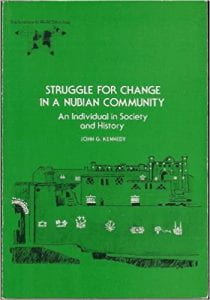 Struggle for change in a Nubian community : an individual in society and history / “John G. Kennedy ; with the assistance of Hussein M. Fahim.” 1977. Olin Library HN780.N8 K35 This study of socioeconomic changes in a government-planned village for resettling Nubian farmers in Egypt whose lands were submerged by the Aswan High Dam begins by providing a broad historical and ethnographic background. Comparison of living conditions at the time of the foundation of the village in 1963 to comparable data collected in 1972 shows significant improvements in the economic conditions of settlers, including the provision of modern housing, water pumps and roads. However, the success of the village is less attributable to infrastructure improvements by government planners than to an influential village leader who mobilized the inhabitants to take collective action.
Struggle for change in a Nubian community : an individual in society and history / “John G. Kennedy ; with the assistance of Hussein M. Fahim.” 1977. Olin Library HN780.N8 K35 This study of socioeconomic changes in a government-planned village for resettling Nubian farmers in Egypt whose lands were submerged by the Aswan High Dam begins by providing a broad historical and ethnographic background. Comparison of living conditions at the time of the foundation of the village in 1963 to comparable data collected in 1972 shows significant improvements in the economic conditions of settlers, including the provision of modern housing, water pumps and roads. However, the success of the village is less attributable to infrastructure improvements by government planners than to an influential village leader who mobilized the inhabitants to take collective action.
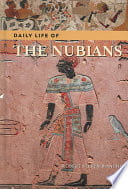 Daily life of the Nubians / “Robert S. Bianchi.” 2004. Olin Library DT159.6.N83 B527 2004 Until recently little was known about ancient Nubia and day-to-day lives of the Nubian people aside from knowing it was a civilization contemporary with, distinct from, and living under the shadow of Ancient Egypt. Nubia existed from about 3500-300 BCE, close to 3,000 years. Thanks to recent massive archeological surveys, we now have a much clearer picture of Nubian civilization, what they ate, how they dressed, how they cared for their dead, their military triumphs and defeats, where their cities were built, and what they looked like. For ease of use by students, the work is organized chronologically. Each chapter is divided into convenient subheads that detail military and warfare, government, language, relations with neighboring civilizations; work and the economy, engineering and architecture, housing, transportation, family life, life cycle events, women’s roles, art, music and dance, literature, science, and religion. It includes a historical timeline of Nubian history, a glossary of Nubian terms, and a bibliography for further reading.
Daily life of the Nubians / “Robert S. Bianchi.” 2004. Olin Library DT159.6.N83 B527 2004 Until recently little was known about ancient Nubia and day-to-day lives of the Nubian people aside from knowing it was a civilization contemporary with, distinct from, and living under the shadow of Ancient Egypt. Nubia existed from about 3500-300 BCE, close to 3,000 years. Thanks to recent massive archeological surveys, we now have a much clearer picture of Nubian civilization, what they ate, how they dressed, how they cared for their dead, their military triumphs and defeats, where their cities were built, and what they looked like. For ease of use by students, the work is organized chronologically. Each chapter is divided into convenient subheads that detail military and warfare, government, language, relations with neighboring civilizations; work and the economy, engineering and architecture, housing, transportation, family life, life cycle events, women’s roles, art, music and dance, literature, science, and religion. It includes a historical timeline of Nubian history, a glossary of Nubian terms, and a bibliography for further reading.
Sources in Arabic/non-Roman Scripts
النوبة القديمة في صور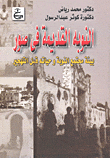 = al-Nūbah al-qadīmah fī ṣuwar : bī’at mujtamaʻ al-Nūbah wa-ḥayātuhu qabla al-tahjīr محمد رياض ؛ كوثر عبد الرسول. Olin Library DT159.6.N83 R63 2007 Old Nubia in pictures : life of the Nubian society before relocation.
= al-Nūbah al-qadīmah fī ṣuwar : bī’at mujtamaʻ al-Nūbah wa-ḥayātuhu qabla al-tahjīr محمد رياض ؛ كوثر عبد الرسول. Olin Library DT159.6.N83 R63 2007 Old Nubia in pictures : life of the Nubian society before relocation.
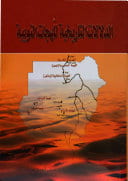 الدلالات التاريخية للهجات النوبية / ǂ- عوض أحمد حسين شبة. = al-Dalālāt al-tārīkhīyah lil-lahjāt al-Nūbīyah / ʻAwaḍ Aḥmad Ḥusayn Shabbah. 2009.
الدلالات التاريخية للهجات النوبية / ǂ- عوض أحمد حسين شبة. = al-Dalālāt al-tārīkhīyah lil-lahjāt al-Nūbīyah / ʻAwaḍ Aḥmad Ḥusayn Shabbah. 2009.
Nubian languages. Dialects.
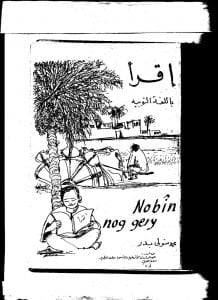 Iqra’ : bi al-lughahal-Nūbiyah = Nobîn nog gery [198-?] اقرأ باللغة النوبية = Nobîn nog gery / محمد متولي بدر.
Iqra’ : bi al-lughahal-Nūbiyah = Nobîn nog gery [198-?] اقرأ باللغة النوبية = Nobîn nog gery / محمد متولي بدر.
القاموس النوبي : نوبين-عربي-إنجليزي ![]() The Nubian dictionary = al-Qāmūs al-Nūbī : Nūbīn-ʻArabī-Injilīzī = [2002?] Olin Library PL8573 .A36 2002 [On-line HATHI]
The Nubian dictionary = al-Qāmūs al-Nūbī : Nūbīn-ʻArabī-Injilīzī = [2002?] Olin Library PL8573 .A36 2002 [On-line HATHI]
وردي والخليل : وأنفاس من المزاج النوبي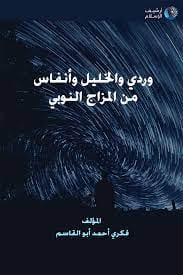 = Wardī wa-al-Khalīl : wa-anfās min al-mizāj al-Nūbī / Abū al-Qāsim, Fikrī Aḥmad. al-Kharṭūm : Sharikat al-Nāshir al-Maktabī, [2000]. Olin Library DT159.6.N83 A28 2000 Nubians; songs; history and criticism.
= Wardī wa-al-Khalīl : wa-anfās min al-mizāj al-Nūbī / Abū al-Qāsim, Fikrī Aḥmad. al-Kharṭūm : Sharikat al-Nāshir al-Maktabī, [2000]. Olin Library DT159.6.N83 A28 2000 Nubians; songs; history and criticism.

دونياندي ديمين ديمين نئووبة ائيئووئيري = عالم التسعة وتسعين اغنية نوبية Dunya (99) ] emillo wer damenil ow Nubi = Dūnyāndī daymīn daymīn Naʼūbah aʼīʼūwaʼīrī = ʻĀlam al-tisʻah wa-tisʻīn ughnīyah Nūbīyah = World of 99 Nubian songs = Die Welt der 99 Nubischen Lieder. القاهرة : الحضارة للنشر، .[2012
Music Library (Lincoln Hall) ML3760.N83 D86 2012 & Music Library A/V (Non-Circulating) CD 23797 [838 pages : color illustrations ; 24 cm + 1 audio disc (4 3/4 in.) System requirements: MP3 player.] In Arabic, Dongola-Kenuz, English and German. Folk songs; without music.
Online Sources For Nubian
Nubian Languages and Literatures
Nubian Studies General Online Sources
![]()
![]()
If you want to explore more on this topic, your first point of contact with these resources should be the library discovery tool (online catalog). To search in the Library catalog for scholarly and popular resources centering on Nubian is to use a key-word search or subject headings such as: Nubian languages > Dialects / Nubian languages > Conversation and phrase books / Nubia > History / Nubians > History Nubia > Social life and customs / Nubia > Economic conditions / / etc. These will bring up materials in all languages, although fiction often will not have subject headings. For more detailed instructions on searching for non-English materials, ask the Curator [ah16@cornell.edu].
 Ali Houissa, Middle East & Islamic Studies Curator, 174 Kroch-Asia Library•Cornell University, Ithaca, NY 14853-5301
Ali Houissa, Middle East & Islamic Studies Curator, 174 Kroch-Asia Library•Cornell University, Ithaca, NY 14853-5301




